2023-2024 Jones Apollo Snowboard Binding
Stated Flex Rating: 9/10
Available Sizes:
- Medium (7.5-10 US Men’s / 25.5-28 Mondo)
- Large (10.5+ US Men’s / 28.5+ Mondo)
Size Tested: Medium
Stated Features:
- Stiff flex for max response
- SKATE TECH for ultimate energy transfer
- Flax / Carbon highback for max support
- Hanger 3.0 for better boot fit
- Comfortable and responsive Power Spine ankle straps + 3D Flex Fit 2.0 toe straps
- Swap bushings + straps to customize response – Surf mode vs. Freeride mode
Blister’s Measured Weight per Pair (size M w/ hardware + mounting disk): 1.762 kg / 3.88 lbs
MSRP: $599.95
Boards Used: Nitro Squash, Jones Storm Wolf, Arbor Iguchi Pro
Boots Used: Nitro Select, K2 Ender, K2 Orton
Test Locations: Alyeska Resort & Turnagain Pass, AK
Test Duration: 21 days

Intro
Jones Snowboards, a part of the Nidecker group that also includes NOW bindings, began selling their own bindings back in 2018. The Jones bindings utilize NOW’s SkateTech chassis (which we will fully explain below). The 2023-2024 Jones lineup includes 4 different men’s binding models, 2 women-specific versions, plus a youth model and canted “Surf” versions of their men’s and women’s Meteorite bindings.
The Jones Apollo is their flagship, high-performance binding, designed for advanced to expert riders seeking the most responsive binding for freeriding and all-mountain use.
Over the years, I have grown to love very stiff bindings, especially the SkateTech-equipped NOW O-Drive, but became frustrated with that binding’s long-term durability, which naturally sparked my interest in the Apollo. Here’s what I’ve found.
What Jones Says About The Apollo
“The ultimate freeride binding. Ideal for technical freeriding and high speed carving.The Apollo is a high powered freeride binding made for the expert freerider who rides technical terrain that demands unmatched edge control and response. The Apollo is the stiffest Jones binding and features a Flax Carbon highback with a wide upper to lock in toe side turns and SKATETECH technology that transfers energy directly to your edges.”
SkateTech Platform
SkateTech, adopted from NOW Bindings, is featured on every Jones binding and is one of their key differentiators. Here’s how they explain the concept: “The SkateTech system works like a skateboard truck and enhances board control + reduces foot fatigue by transferring energy input directly from the binding to the board edges through a dynamic design.”
In terms of my non-splitboard bindings, I have been predominantly riding NOW bindings with SkateTech since 2018 and have grown to love the feel compared to traditional bindings, for the numerous reasons I’ll touch on below.
The smooth and efficient ride of the SkateTech platform is accomplished via four main components: (1) the Hangar, (2) Kingpin, (3) Post, and (4) Bushings. You can see each in the below diagram from Jones:

The Apollo connects to the center of the board via the universal mounting disk, linking the post (a small plastic and carbon fiber plate) to the board. The post rises on either side of the center of the binding, linking the main binding chassis and hangar via a kingpin bolt, giving the Apollo the ability to pivot, similar to a skateboard truck. Four bushings are located along the outer points of the binding hangar and are removable / replaceable to tune the binding feel. The Apollo comes with the “hard” bushings as standard, but those can be replaced with softer options if desired.
Jones adds some further details about how the SkateTech platform impacts on-snow performance and feel:
“When you make a hard heel or toe turn, the force you place on your straps and highback is transferred directly to your edge through the hanger, kingpin, and post. By using the mechanical advantage of this pivot and lever system, SkateTech bindings are the most responsive bindings in the world. Once on edge, you are locked in.”
The Apollo binding features the newer NOW 3.0 Hangar, which pivots on the kingpin. Compared to the 2.0 Hangar, which I have spent several seasons riding (and thoroughly enjoying), the 3.0 Hangar is slightly wider at the kingpin ( by ~5 mm), and bushing placement seems further out toward the toe and heel (by ~8 mm). The added width and length help translate more power to the edges of the board through the bushings (due to increased surface area).
In addition to being larger, the 3.0 Hangar sits a bit lower and is generally lower profile, which increases lateral flex and allows for more room for wider boots. I wouldn’t say the Nitro Select boots I’ve been using lately are especially wide or voluminous, but there seems to be less rubbing and wear on the inside of the heel with the Apollo versus the 2.0 Hangar of the O-Drive binding.
If you’re more of a visual learner, here’s a video from NOW, where they explain the SkateTech system:
To cap it off, the Apollo’s baseplate is covered with a “Tri-Foam Foot Pillow” consisting of three different densities of EVA foam. The toes and heels are slightly softer for comfort, gradually stiffening at the midsole, and becoming stiffest on the base of the footbed for added support. I’ve found the Apollo to be super comfortable and the foam seems to help dampen unwanted chatter on firmer conditions.
Stiffness
Jones rates the flex of the Apollo at 9/10 on their scale, making it the stiffest binding in the lineup. Compared to the NOW O-Drive (the now-discontinued predecessor to the newer NOW Drive CX), the Apollo as a whole feels slightly softer; both the Apollo and old O-Drive were rated 9/10 by their respective brands. It seems that their highbacks are comparable in flex and the difference may be due to the more rigid toe and ankle strap of the O-Drive, perhaps reinforcing the boot-highback interface.
All things considered, the Apollo and O-Drive are some of the stiffest, most responsive bindings I have been on (more on their performance, below).
Highbacks
The Apollo features an asymmetric flax and carbon highback that helps give the binding its stiff, precise feel. The asymmetrical shape has felt comfortable all day long, and the upper “wing” adds additional boot contact, which improves the turning response.
Although stiff bindings can be quite uncomfortable due to their sometimes unforgiving highbacks (e.g., NOW Recon & Union Ultra FC), I’ve found the Apollo to feel every bit as comfortable as the NOW O-Drive, despite their differences in highback shape. The flax x carbon material feels very solid and supportive while riding on a variety of snow surfaces. There is not much lateral (heel to toe) flex but it does have a bit of torsional flex, making the binding surprisingly comfortable when initiating and finishing a turn.
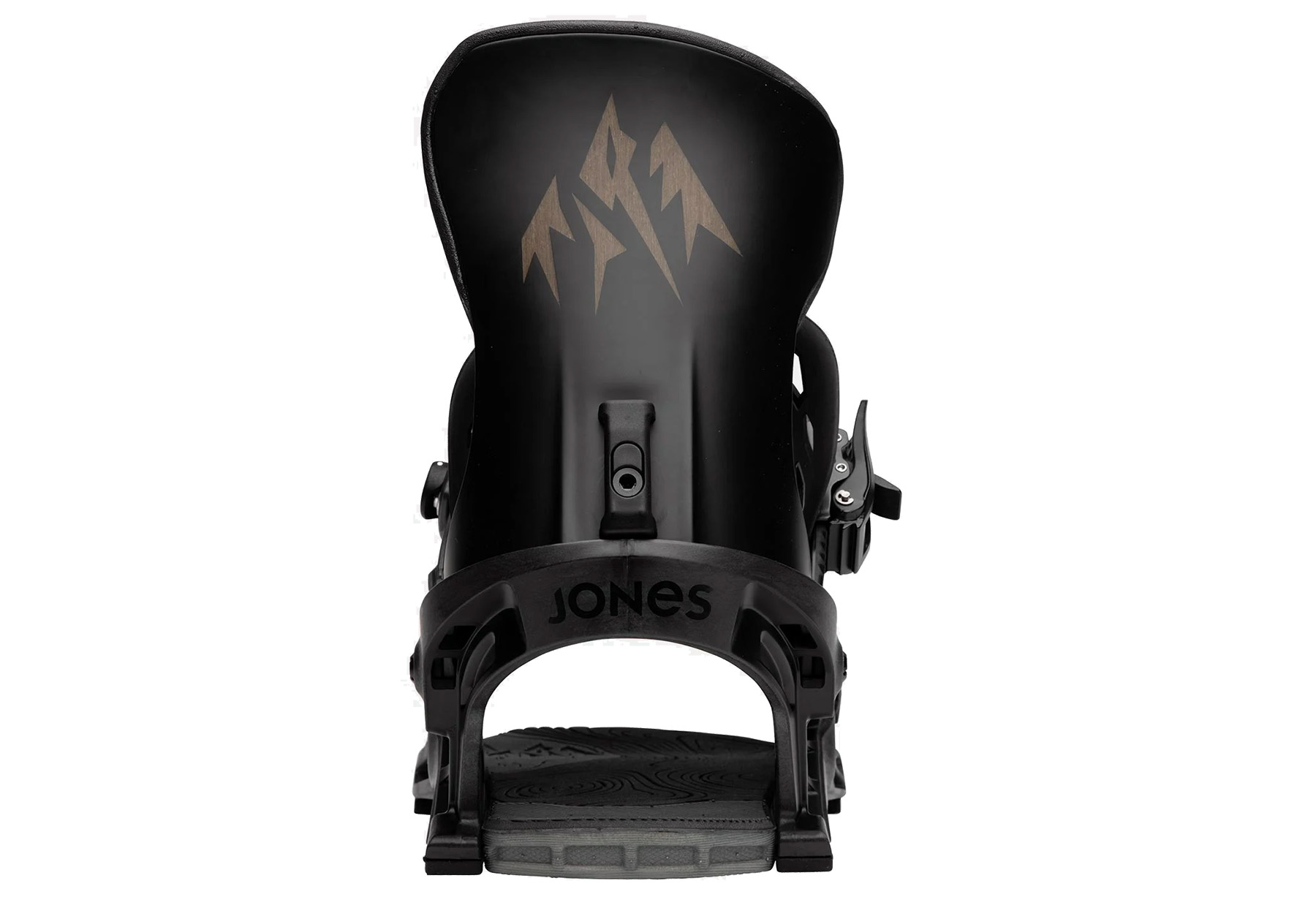
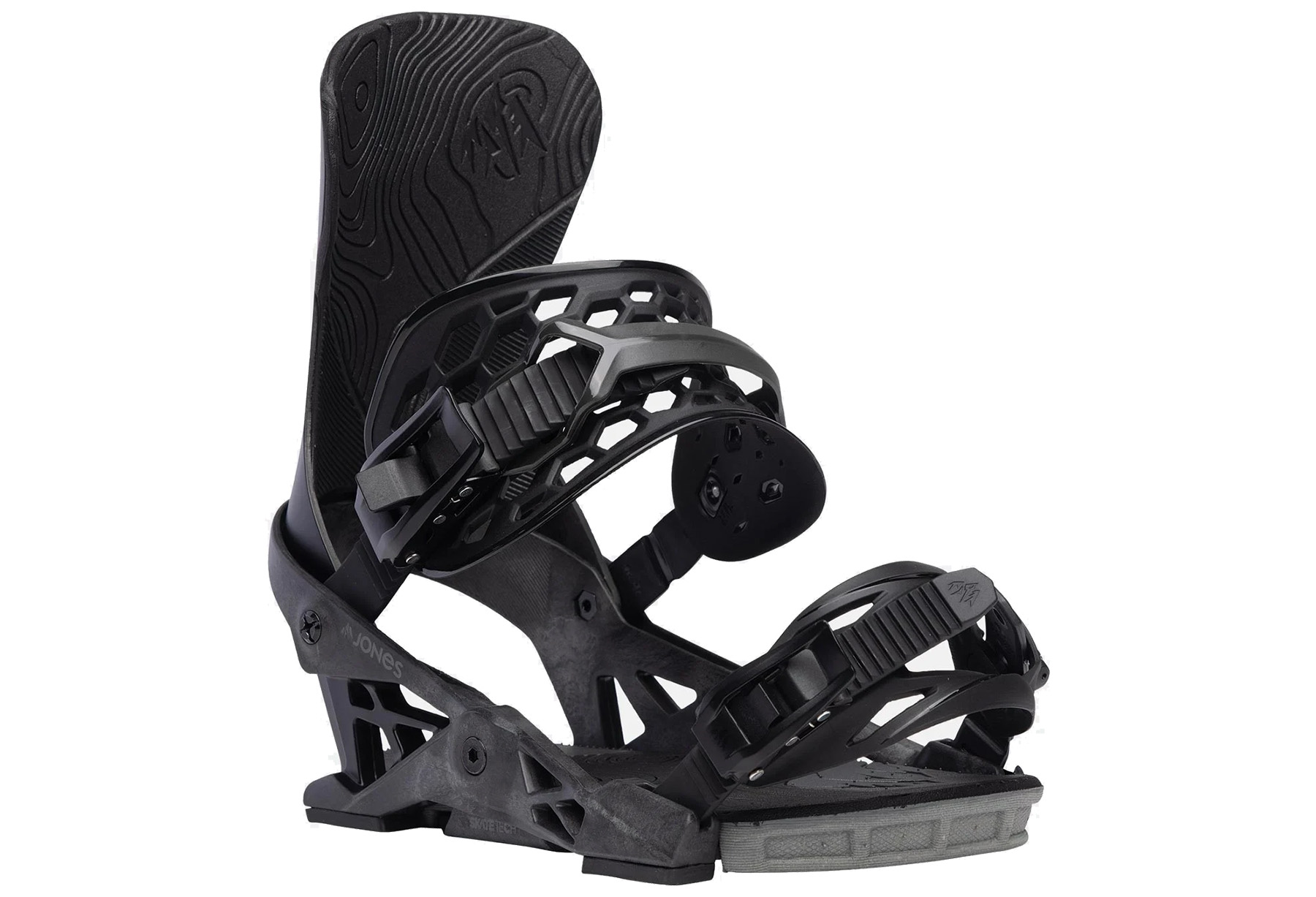
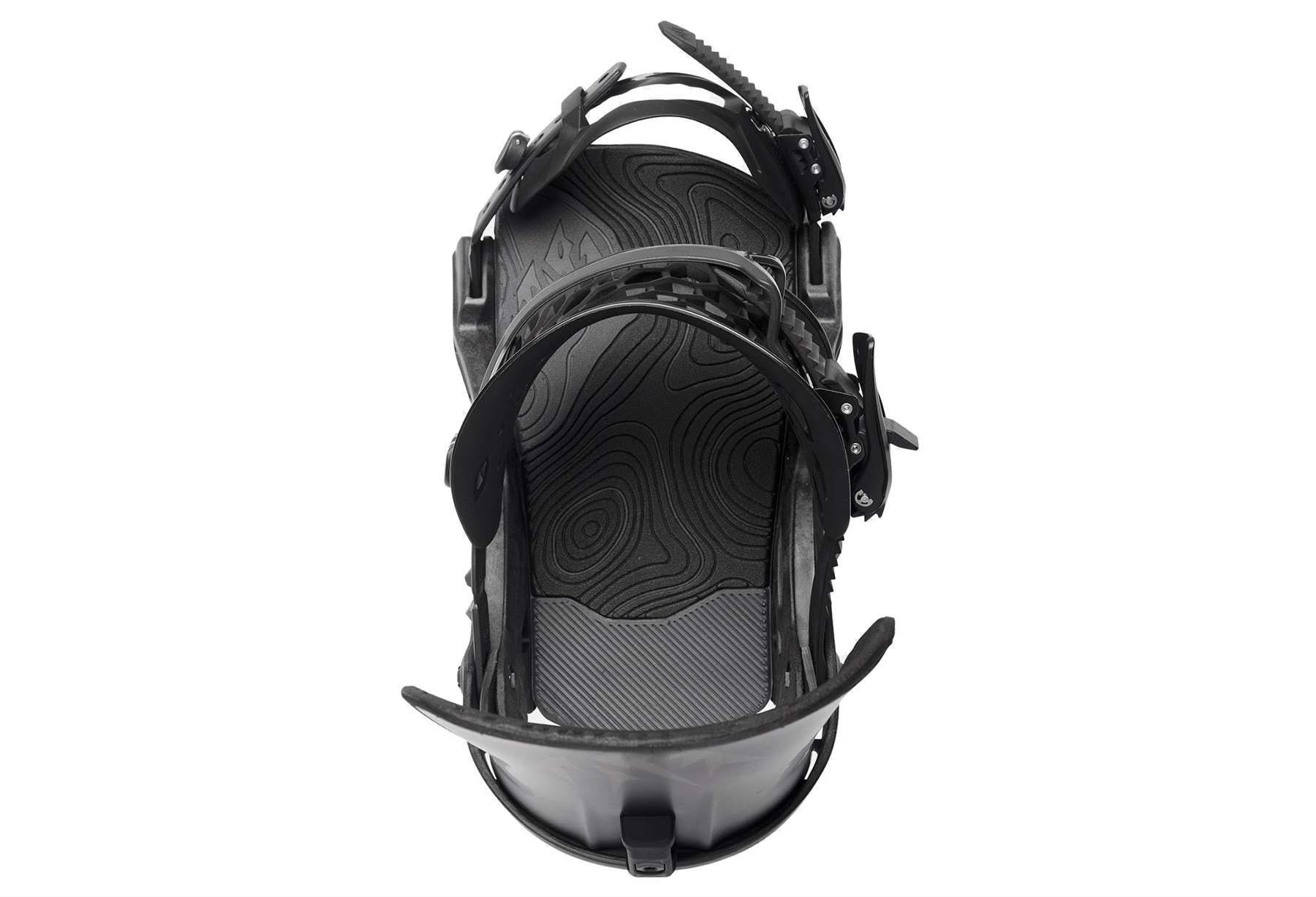

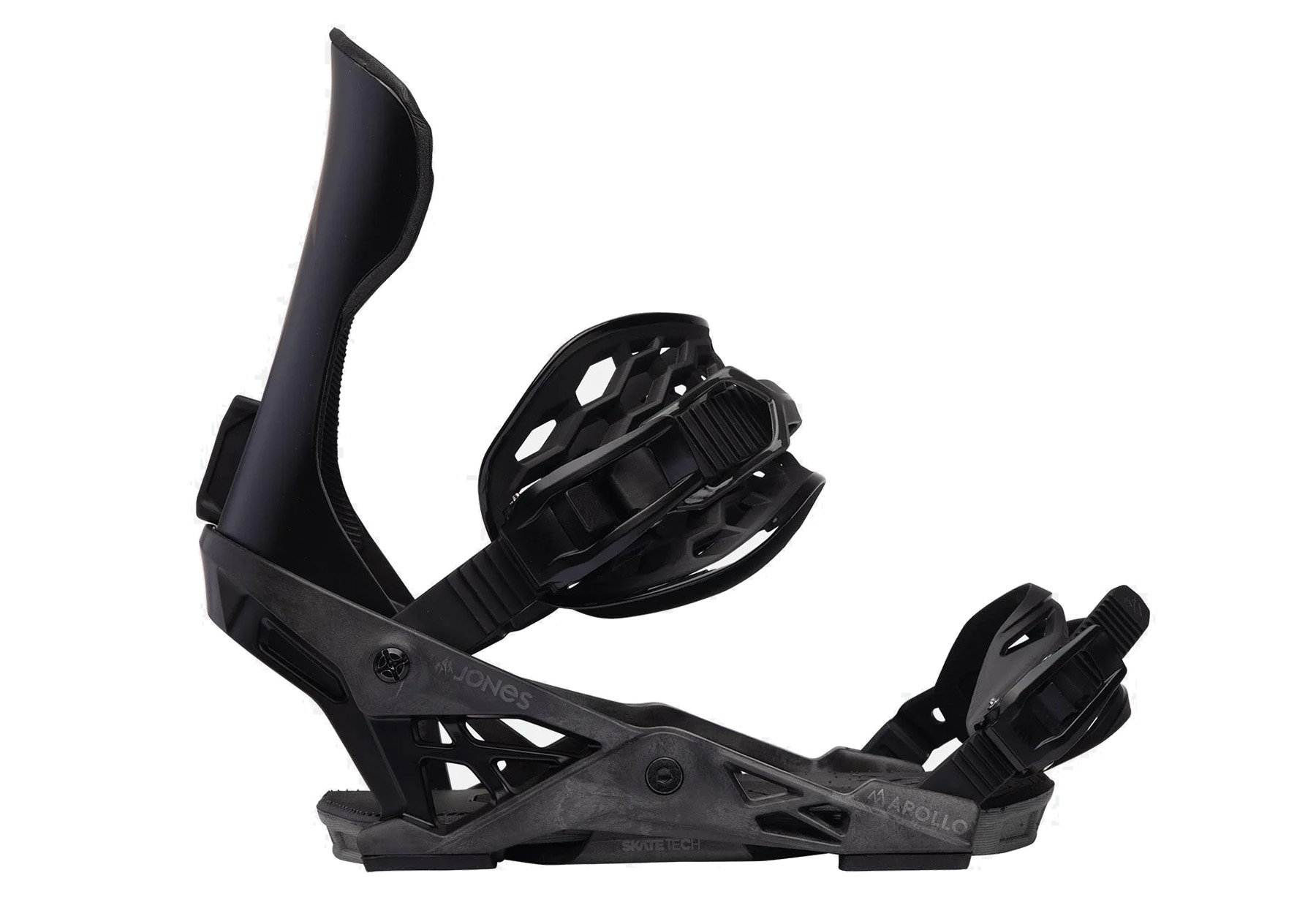
The Apollo’s highback also features an adjustable “multi-position” lean block that can be adjusted with an Allen key to tune the amount of forward lean, or simply twisted upside down. I have been pretty pleased with the standard setting right out of the box. The forward lean block is not the most adjustable and has preset angles, whereas other companies (such as Union) allow a bit more fine-tuning from what I’ve seen.
Overall, the Apollo’s highbacks seem well-matched with the binding chassis, making it a very stiff and responsive binding. The Apollo isn’t a soft park binding by any means, but I still find it fairly manageable to butter and tweak grabs due to the Apollo’s bit of torsional flex. The stiffness of its highback really shines at high speeds, whether laying over super g turns on groomers or blasting through tracked snow and chunder.
Straps
The Apollo uses Jones’s “Power Spine” ankle strap, which is a two-part molded strap that has a wider, more flexible lower section that wraps around the boot and a stiffer upper-center spine for greater response and a more precise interface. The straps feel pretty comparable to the Union Atlas FC in terms of comfort and flex. As mentioned above in the stiffness section, it seems that the ankle straps on the NOW O-Drive are a bit more rigid with less stretching and flex, perhaps making the O-Drive feel slightly stiffer.
The Apollo’s Power Spine ankle straps can also be flipped to customize the fit and feel, switching from a sort of “freeride mode” to “surf mode.” By flipping the strap, the rider can direct most of the ankle strap pressure and support higher into the boot for added lateral support and board response (freeride), or direct the strap pressure more onto the arch / heelcup, for good heel support but more ankle flexibility (surf). I prefer the freeride fit for most days, but it is great to have the ability to tune the binding for a surfier, more tweak-able ride (especially if you also swap out the bushings).
The Apollo’s “3D Flex Foot 2.0” toe strap stretches pretty easily to accommodate a variety of boot shapes. Jones claims the new, more minimal “2.0” design is lower profile but every bit as supportive and comfortable as the original design. The toecap does a great job of staying locked over the toes and I haven’t had any issues with it slipping around while riding.
A small but useful feature of the Apollo is a hinged strap that connects the ankle and toe straps to the binding hangar. It allows the ankle straps to easily flop open and out of the way of your boot while you strap in, which I’ve found is especially nice when the temps are cold and the binding components are stiffer. Everything helps for quick transitions from the chairlift to riding.
After logging quite a few long days with the Apollos, I have had little to no discomfort in any regard, let alone from uncomfortable straps.
FULL REVIEW
Andrew Forward (5’ 11”, 175 lbs /180 cm, 79 kg): Over the years, I have come to appreciate stiff boards, stiff boots, and stiff bindings due to the stability they can provide at higher speeds and the responsive, powerful on-snow feel. With this in mind, I have been really impressed by the Apollo.
The Apollo’s stiff highback, coupled with its SkateTech chassis, makes it one of the snappiest and most powerful bindings I have tried — yet still fairly rider friendly. Thanks to its pivoting chassis, the Apollo feels just about equally responsive at high and low speeds and can transition from edge to edge efficiently, reducing fatigue. Jones balanced the binding well to effectively transfer rider inputs into the board without being overly touchy and chattery.
Powder and Tracked Powder
The Apollo is a fantastic binding for powder riding and nicely complements powder-specific snowboard shapes. Most of my pow boards are quite wide, especially near the nose; the Apollo’s stiff highback and extended frame of the 3.0 Hangar combine to do a superb job of getting those sorts of boards on edge.
Even on some of my stiffer pow boards (e.g., Jones Storm Wolf), the Apollo allows me to get on edge quickly and deliver strong edge pressure. And the stiffness of the Apollo’s highback really shines when the mountain gets tracked out. This is particularly noticeable in the heavy maritime snowpack at Alyeska Resort and the rest of the Chugach Mountains, where chopped-up snow can set up quickly.
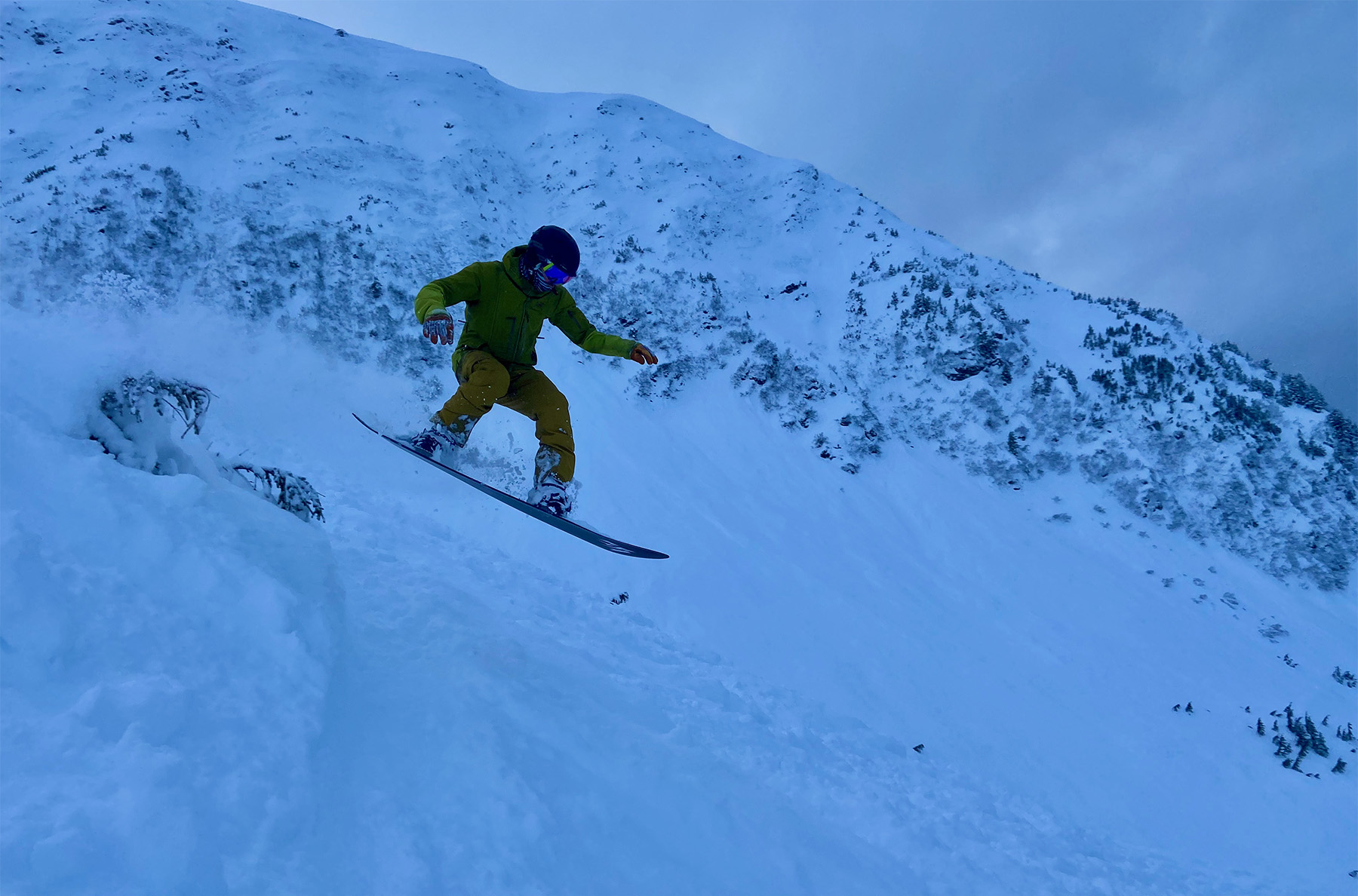

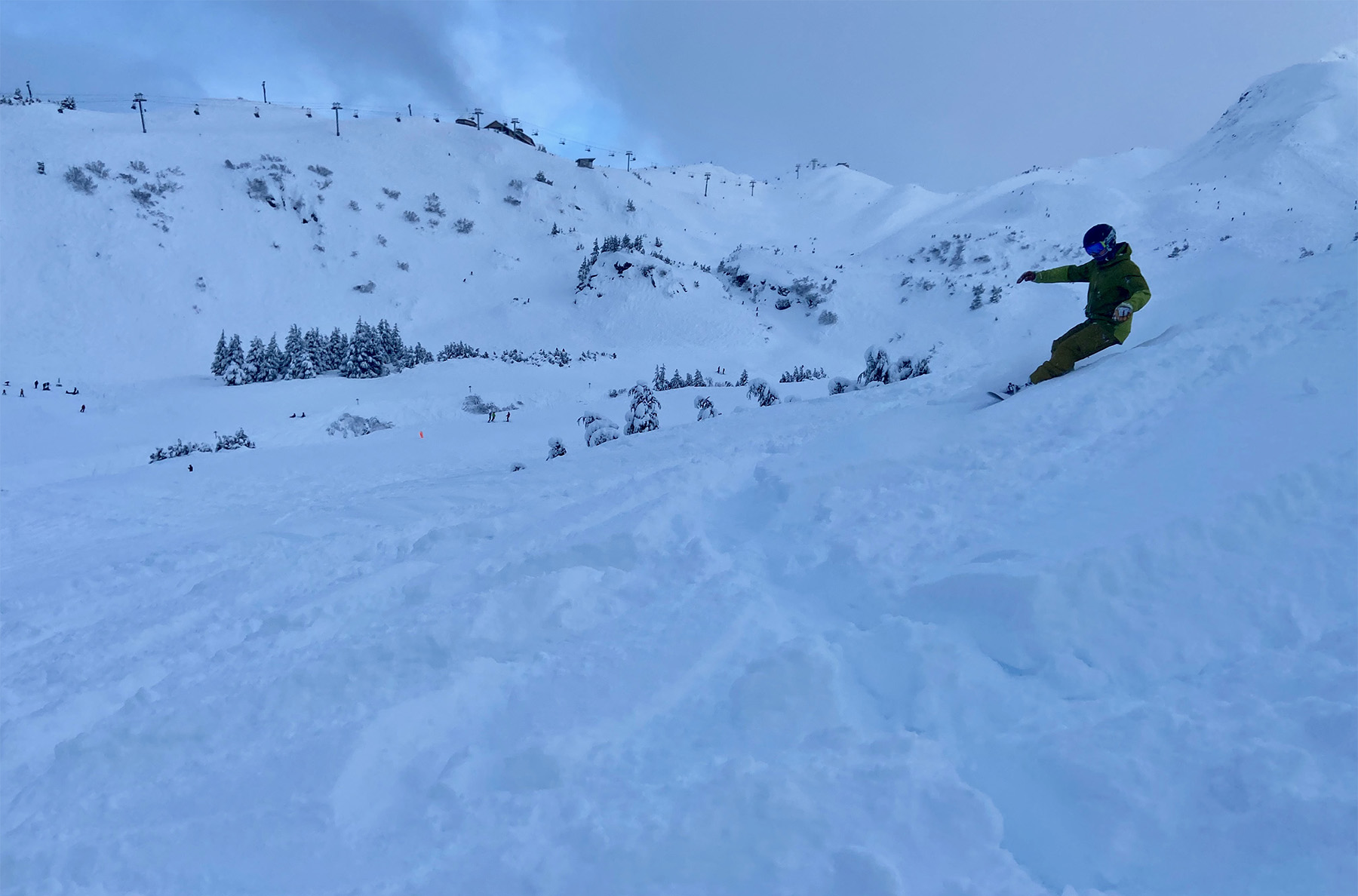
Especially for such a strong and responsive binding, I really appreciate the versatility of the Apollo — it translates power exceptionally well when laying down huge carves and slashing, yet feels nimble when switching from edge to edge with a little finesse.
Groomers / Variable / Hardpack
On firmer conditions, the Apollo’s power transfer and responsiveness once again make it stand out. In addition to its efficient transfer of rider input into edge pressure, the rubber bushings on the base of the binding and foam footbed give the Apollo a smooth, damp ride when conditions get bumpy and firm, increasing control on the board.
The Apollo’s long and wide hangar has done a fantastic job of leveraging the force near the edge of the board on a variety of all-mountain and groomer-specific snowboards. The winged highback of the Apollo makes my boot feel locked in with ample support when laying down fast, hard, laid-over heelside carves, inspiring confidence. The pivoting of the SkateTech platform is obvious on soft corduroy both when making long, powerful turns and when linking together tighter, faster carves. Plain and simple, the Apollo feels very smooth and effectively transfers energy / input to the board edges.
Durability
After a little over 20 days of use so far, I have been pleased with how the Jones Apollo bindings have held up.
I put in multiple 100+ day seasons on my old NOW O-Drive bindings, but during that time, I experienced significant failures and had to have many replacement parts* sent to keep them functional. At least so far, the Apollo seems more robust and features better buckles and a burlier hangar. My biggest salute goes to Jones for their use of alloy buckles on the Apollo.
The Achilles heel in the NOW O-drive design was its set of carbon-composite buckles. Every season, I would break at least 3-4 toe buckles and 1-2 ankle buckles, to the point where I now request two backup buckles every time I submit a warranty claim. In addition to buckles, I have broken 1 highback on the O-Drive and completely snapped off the 2.0 Hangar at the heel. The Apollo’s 3.0 Hangar design seems better engineered and is apparently lighter than the 2.0.

I obviously don’t currently have nearly as much time on the Apollo as the O-Drive, so I’ll update this section after a season and report back with any findings or destruction that happens along the way. I am hopeful that the Apollo bindings will be relatively low maintenance, similar to my experiences with the Union Atlas and Atlas FC.
*Although I have broken various parts on the NOW O-Drive and its SkateTech system, NOW has a lifetime warranty on the hangar, kingpin, and post, and with excellent customer service, the replacements were easy and timely. Under their warranty section, Jones states that “Jones guarantees all bindings baseplates components (hanger, kingpin and mounting ring/post) to be free from defects in materials and craftsmanship for life.” You can see all the warranty details on the Jones website.
Who’s It For?
The Jones Apollo is for advanced to expert-level freeriders who seek out high speeds and prioritize the utmost control. The Apollo is a stiff, hard-charging binding that offers ample support when laying down powerful carves but is also fairly easy to manipulate for having such a stiff flex. For those who enjoy stiff boards and boots, this carbon-laden binding is a very suitable match.
The other obvious contender in this category, given that it shares similar tech and a similar stiffness rating, is the NOW Drive CX. I haven’t yet been able to test the Drive CX, but I’ve spent multiple seasons riding its predecessor, the O-Drive, and I have a feeling the performance would be quite similar. I hope to be able to A/B test the two in the future. And if the stiffness of the Apollo or Drive CX sounds a bit intimidating, I’d take a look at the Jones Mercury, NOW Drive, or Nidecker Supermatic.
Bottom Line
The Jones Apollo is a very stiff freeride binding that excels at high speeds on steep, terrain and in firm or soft conditions, whether at the resort or in the mechanized-access backcountry. It is designed for aggressive riding and laying down trenched turns, but with that in mind, it’s still versatile and comfortable enough to flick around in tighter terrain and trees. It’s far from ideal if you want a particularly soft, forgiving binding, but the Apollo is an excellent match for a moderate stiff to very stiff all-mountain, groomer-specific, or powder-specific setup.


Hello would kike to know if the size chart of jones bindigs is true to size. My boot size is 43 so I am at he point whre is a bit difucult to decide between M and Large size of the bindings. What do you recommend? Choose the smaller to get the straps on minimum or biger for oposite? My boots are deeluxe and I think that they are not very volumich…
Thank you for reply